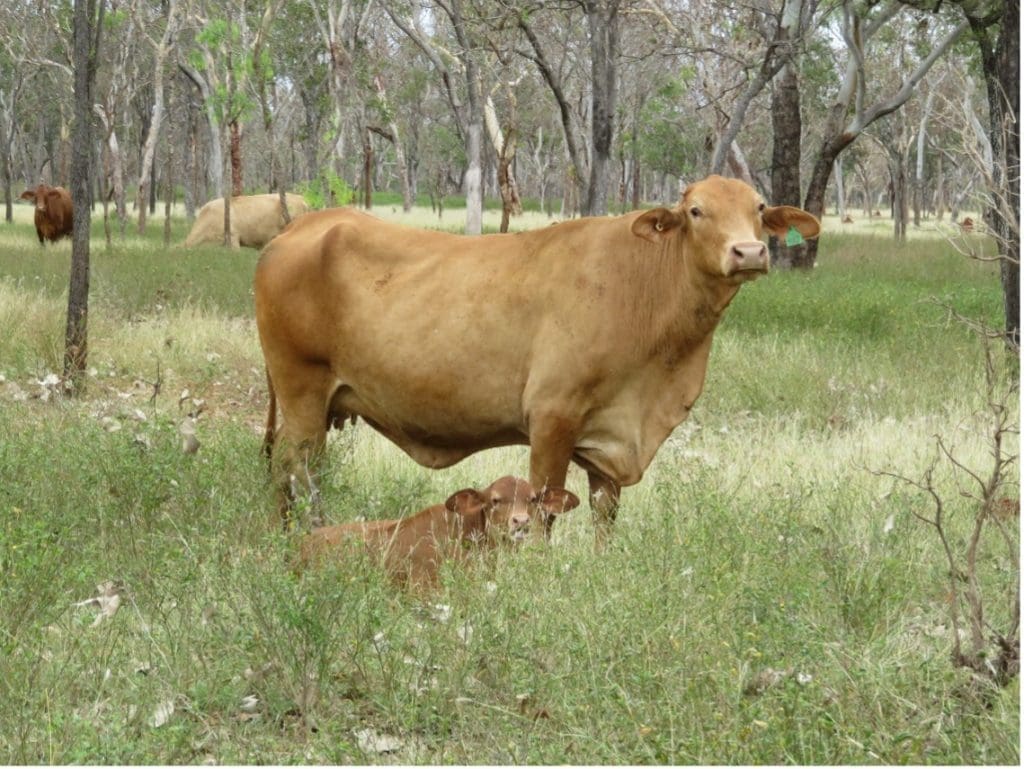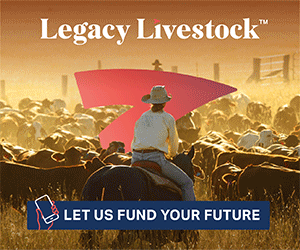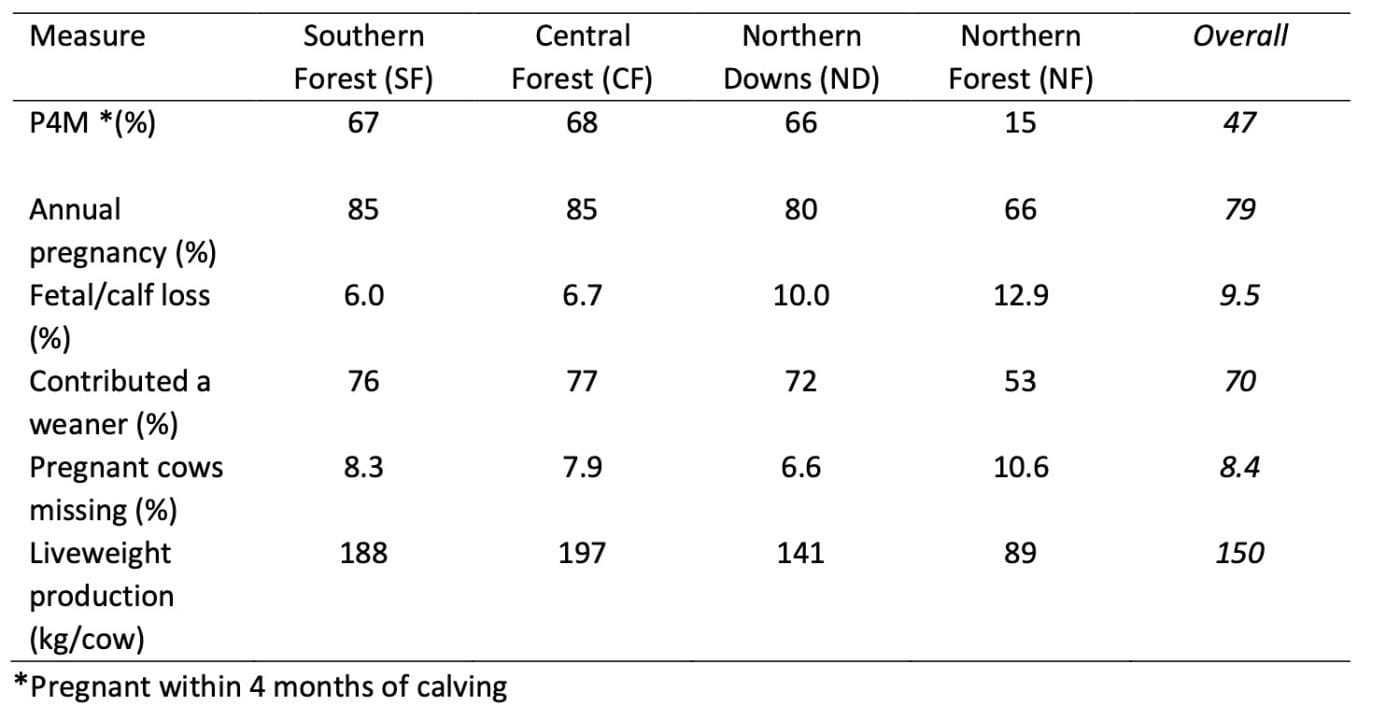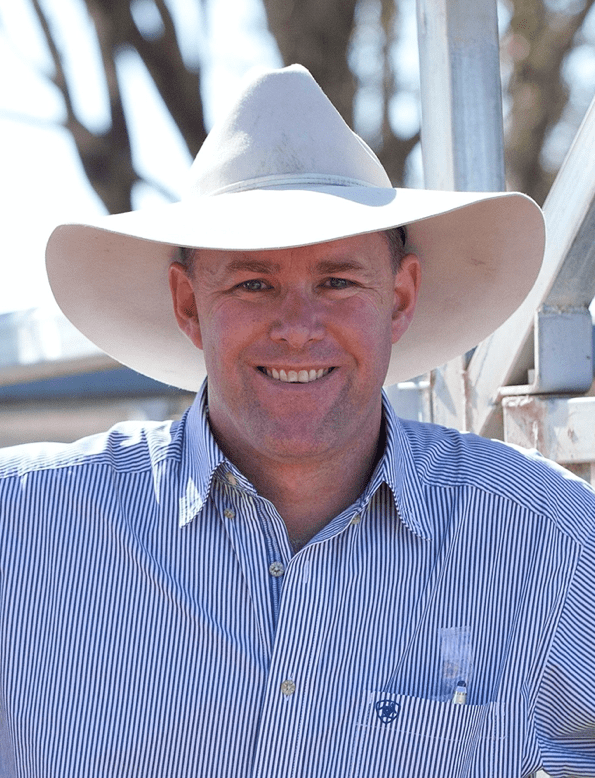
F1 Senepol x Brahman cow and calf at Manbulloo (near Katherine, NT).
DESCRIBING the Australian beef industry as the ‘northern’ industry or the ‘southern’ industry is a very broad categorisation.
Within both of these descriptors, based largely on an environmental boundary, there are major differences that impact production methods, calendars of management as well as differences in marketing.
Choosing to apply these broad descriptions can often lead to misunderstandings about the broader industry. Equally, when an industry is categorised too broadly, it can result in technology being overlooked or disregarded because “it doesn’t really apply to me.”
The Northern Australian beef industry is a geographically diverse zone stretching from the Queensland/NSW border to the Pilbara in Western Australia and Cape York Peninsula. The diversity of environments, including climatic variability is significant and has a major impact on the way beef production is undertaken.
Attempting to group this diversity under the term ‘northern’ underestimates the significant impact these factors play in production. In many ways, the diversity of environments and climate are much greater than those environments in more temperate and southern areas where beef production is undertaken.
However, it is equally important to also recognise that there are major similarities shared across all beef enterprises undertaken in northern Australia. These include the significant variation in climate, with distinct wet and dry seasons, reliance on tropical and lower quality C4 pastures and in most areas, significant levels of phosphorus deficiency.
As part of the NABRAC Conference in Darwin last month, Alan Bell, now at Conrnell University, and Nicholas Sangster of Charles Sturt University, presented their work focusing on the productivity of breeding cattle in Northern Australia.
 Their paper, drawing on their publication of a Needs Gap Analysis for NB2, noted these common challenges faced by northern producers, and the flow-on effects that included the need to have larger areas of land, stocked at lower rates to offset the less productive feedbase, and the implications for management of breeding herds as well as marketing.
Their paper, drawing on their publication of a Needs Gap Analysis for NB2, noted these common challenges faced by northern producers, and the flow-on effects that included the need to have larger areas of land, stocked at lower rates to offset the less productive feedbase, and the implications for management of breeding herds as well as marketing.
While reflecting on these challenges, which are shared across the diverse landscape of Northern Australia, their presentation to NABRAC identified that productivity of breeding herds based in Northern Australia has “not changed appreciably for several decades, despite a large amount of scientific research and economic analysis to identify drivers of the profitability of breeding enterprises.”
Within the Final Report, published in 2022 by MLA, the researchers looked at the last four significant surveys of breeding enterprises conducted in Northern Australia from 1989 through to 2005. These surveys offer some useful insights into the industry at that time.
Alan Bell and Nicholas Sangster considered the results from work done in the earlier surveys from 1989 and 1992. They reported that the key findings at that time were:
- Bos indicus genetics were predominant.
- Most properties employed year-round mating.
- Branding rates were 55-70pc (mean 63pc)
- Most carried out weaning and half of properties weaned calves down to <6 months of age (150 kg)
- Bull culling rates were low with rates between 10 and 25pc being common.
- Calving was common in two-year-olds, but generally delayed in Brahmans.
- Most retained <50pc heifers, but on extensive properties nearly all were retained.
- Culling occurred on temperament, conformation, age, negative pregnancy test or producing a poor calf.
- While most producers saw value in superior bulls, many retained bulls for >5 years and culled based on conformation rather than performance.
However, it was noted that these findings were based only on the response of 33pc of the total number of producers responding to the survey at that time.
 Moving forward to 2014, the report presented data from the most recent survey of reproductive performance, known as CashCow. That study reported on some 78,000 cows run in 142 breeding mobs, across 72 commercial properties that were located in Southern Forest, Central Forest, Northern Downs, and Northern Forest.
Moving forward to 2014, the report presented data from the most recent survey of reproductive performance, known as CashCow. That study reported on some 78,000 cows run in 142 breeding mobs, across 72 commercial properties that were located in Southern Forest, Central Forest, Northern Downs, and Northern Forest.
Measurements were made using a crush-side electronic data capture system over three to four consecutive years during 2008-2011.
Key measured variables were: percentage of cows pregnant within four months of calving (P4M); annual pregnancy rate; percentage of fetal/calf mortality; percentage of cows contributing a weaner; and annual percentage of pregnant cows missing (an estimate of mortality rate)

Source: McGowan et al. (2014)
The results of the CashCow work show that while some of the major indicators such as weaning rate average of 72-77pc, the report noted that “branding rates per se were not reported in the CashCow survey but can be estimated by subtracting foetal/calf loss percentage from annual pregnancy rate percentage”, there are still opportunities across environments for improvement in herd production levels.
In terms of learning, CashCow also helped formalise the productivity drivers that are common across the four major environmental landscapes that characterise the northern industry. These profit drivers are:
- Percentage of cows pregnant
- Percentage foetal/calf loss (or weight of weaned calves)
- Liveweight change in cows/heifers and
- Percentage herd mortality.
Of the four environments that are identified as forming the northern industry, the Northern Forest country, which is identified as country north of a line from Proserpine in Queensland to Broome in Western Australia. This landscape is dominated by eucalypt forest and experiences the environmental extremes over a 12-month period. The challenges for producers in this environment are significant.
However, this does not mean that production in this region is uneconomic either. The report cited the Australian Beef Report in 2017 which showed “mean earnings before interest and tax (EBIT) of the top 25pc properties in the Northern Forest (4 to 8.6 $/AE) were in the same range as those in other areas of the north (3.6 to 9.7 $/AE).”
These reports are valuable for producers in several ways. Firstly, they offer some insights into the key profit drivers for northern breeding herds, across the four major environments where beef herds are located.
In doing so producers have an opportunity to reflect on the area they can have greatest influence. These areas of influence can range from the timing of management decisions such as controlled joining for replacement heifers, to the selection of bulls focussing on key fertility traits such as Days to Calving and Gestation Length. There is also the opportunity to utilise Genomic EBVs that can address major fertility traits relevant to herds run in the north.
The timing of these papers is very helpful in showing the industry not just what has been learned so far, but also signposting the opportunities that exist across the entire diversity of the northern industry.
 Alastair Rayner is the Principal of RaynerAg, an agricultural advisory service based in NSW. RaynerAg is affiliated with BJA Stock & Station Agents. He regularly lists and sell cattle for clients as well attending bull sales to support client purchases. Alastair provides pre-sale selections and classifications for seedstock producers in NSW, Qld, and Victoria. He can be contacted here or through his website www.raynerag.com.au
Alastair Rayner is the Principal of RaynerAg, an agricultural advisory service based in NSW. RaynerAg is affiliated with BJA Stock & Station Agents. He regularly lists and sell cattle for clients as well attending bull sales to support client purchases. Alastair provides pre-sale selections and classifications for seedstock producers in NSW, Qld, and Victoria. He can be contacted here or through his website www.raynerag.com.au
